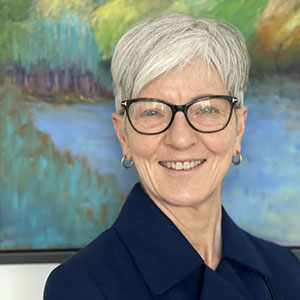Executive Summary
“There are two rivers [faith-inspired and secular human service organizations] running in parallel, and the separation is not to the benefit of progress.”
As varied as faith traditions are, many share a common concern with fighting poverty and elevating recognition of our shared humanity. Indeed, faith-inspired organizations serve as the bulwark of the social safety net for the most vulnerable among us.
Our research found that they account for two out of every five dollars spent on safety net services across a sample of six representative US cities. And while some funders, including government agencies, recognize faith-inspired organizations’ role in the social safety net, that perspective has not translated into funding from the largest institutional philanthropies. Among the 15 largest private foundations, faith-inspired human services nonprofits represent only 12 percent of safety net funding, much less than their 40 percent share of the sector.
Download the Executive Summary
Download the Full Article
Large institutional philanthropy’s discomfort with faith-inspired nonprofits is often grounded in both searing personal experiences and a complicated historical relationship between faith traditions and many areas of social justice. Throughout history and into the present moment, major faith traditions have also been the source of harm, trauma, and hardship in the areas of gender equity, reproductive health, and LGBTQ rights among others. At the same time, faith-inspired impact has been at the core of social movements that have transformed the United States—ranging from Quakerism among white abolitionists to the Christian temperance movement in women’s suffrage to the interfaith organizing (principally led by Black preachers, Catholic priests, Jewish rabbis) that formed the core of civil rights era organizing. This complex history—with its various tensions of conservatism, charitable humanitarianism, and progressive social justice liberation—can make it hard for funders to discern which faith communities are aligned with their equity values, let alone with their impact objectives.
As mission-driven leaders and researchers, we seek to contribute to a robust dialogue about the role of faith-inspired organizations in driving social change. This article reflects independent analysis of data, interviews with field experts, and perceptions of the social sector honed over the 20 years of Bridgespan’s work in the sector.
Our research has identified three myths that leave impact on the table:
Myth #1—Secularism is the dominant frame for America.
Reality: Despite recent declines in religious affiliation, nearly three out of every four Americans remain religiously affiliated – with Black, Latinx, rural and low-income communities actively engaging in their faith at higher rates.
Myth #2—Faith-inspired organizations are a small portion of the social sector.
Reality: Giving to religiously affiliated organizations (which includes donations to congregations) represents nearly one-third of all giving in the United States. Roughly a third of the 50 largest nonprofits in the country have a faith orientation. And, 40 percent of international nongovernmental organizations are faith-inspired.
Myth #3—Faith-inspired organizations are stodgy and lack innovation.
Reality: Many faith-inspired organizations are at the forefront of innovation in service delivery and the ability to meet the needs of the communities they serve.
As we collectively look out on the crises of a global pandemic, our country’s racial reckoning, and increasing threats to democratic norms, it is all the more imperative that we look for ways to more deeply engage with the systems and institutions that motivate, convene, and establish a sense of community across the lives of millions in this country and billions of people abroad. Highlighting exemplary organizations grounded in faith-based traditions, this study suggests that one way might be to build bridges across secular-anchored funding and faith-inspired impact. Here are a few thoughts on how to get started:
- View faith-inspired organizations as brokers of trust within communities. “As a means for intersecting with communities that are rooted in race and ethnicity,” says David Dodson, who is active in the interfaith community in North Carolina and recently retired as president of MDC, a catalyst for social change in the South, “faith-inspired organizations that are governed, run, and accountable to the people they serve can be excellent partners for funders who wish to build authentic connections and partnerships with underrepresented communities.”
- Extend trust through meaningful dialogue. Successfully engaging with these organizations hinges on trusting the roles they play in their communities, and embarking on a frank, mutual dialogue with faith-based actors about the funder’s motivations. The need to align on values goes both ways, with both funder and organization open about what drives them and where they won’t go. Some leaders we spoke with cautioned anyone hoping to partner with congregational communities to center the communities, not themselves.
- Complement faith-inspired organizations by collaborating on solutions. “Churches are really key anchors in underserved communities,” said Kathryn Pitkin Derose, senior researcher at RAND Corporation, a policy think tank. “They excel at responding to critical needs, and they know those needs in their communities very intimately. When you start to combine efforts with churches, you can really have an important impact on the community as a whole.”[1]
Jeri Eckhart Queenan and Devin Murphy are partners in The Bridgespan Group’s New York office, where Peter Grunert is manager. The authors also thank Bridgespan former Consultant Liz Calder, Editorial Director Cora Daniels, Associate Consultant Erica Lezama, Case Team Leader Asimina Pantazelos, Manager David Washer, and Senior Editorial Director Larry Yu for their essential collaboration on this article.
* * * * * *
We are grateful for the work of others who helped shape our perspective. While we cannot be comprehensive, we would provide a special recognition to the Aspen Institute, Auburn Seminary, the Berkley Center for Religion, Peace, and World Affairs at Georgetown University, the Commission on the Practice of Democratic Citizenship, Fetzer Institute, the Lake Institute on Faith & Giving at Indiana University’s Lilly Family School of Philanthropy, Interfaith Youth Core, The Philanthropy Roundtable, and Repairers of the Breach.




